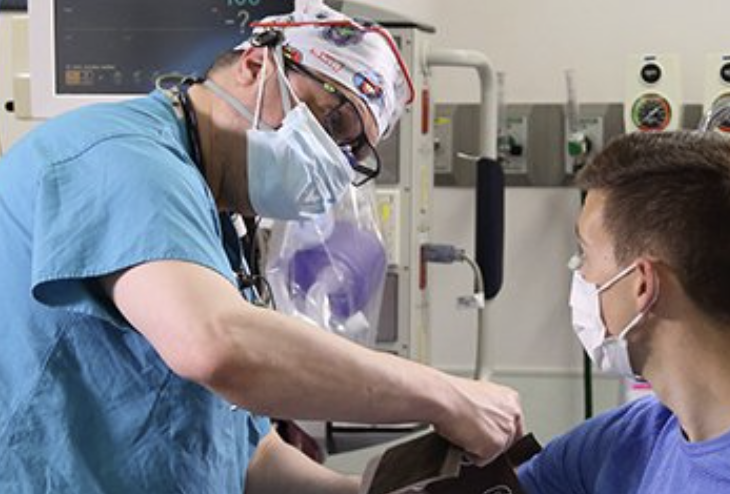
RUTLAND—In advance of the cold and flu season,is updating their visitor guidelines and asking the public’s help in curbing the spread of infectious diseases.
“We are making some adjustments to our visitor guidelines,” said Dr. Todd Gregory, chief medical officer for the hospital, in a news release, Oct. 12. “We want to keep our patients, visitors, and staff safe and lessen the transmission of contagious diseases and viruses that tend to increase during the cooler fall and winter months.”
The hospital relaxed some of its visitor guidelines this past summer and has extended visitation hours from 9 a.m. to 9 p.m. seven days a week, as well as reopening its Allen Street entrance. Regardless of these updates, hospital leadership remains focused on safety for patients, staff, and visitors.
Some of the nuances to the visitor guidelines include clarification around the number of visitors who can visit an individual patient or go to a particular unit. This may also include a restriction to the amount of time that a patient may have a visitor.
“Some units will have different visitation allowances based on the vulnerability of the patient population, patient safety concerns, or patient volumes on the unit,” said Karen Ferreira, BSN, RN, RN-BC, nursing director in the surgical care unit. “Examples of this include the emergency department which may restrict the number of people who can be with a patient; intensive care unit where visitors may only be allowed to visit at certain times for certain patients; surgical care unit where patient volume could restrict the number of allowed visitors.”
Decisions on visitation times and allowances are made on a patient-by-patient basis and/or by the nurse leader on each unit based on the unit’s overall patient volume and acuity.
Healthy individuals are invited to visit patients during the usual visitation hours. If the patient has an infectious disease such as the flu, Covid, RSV or other illness that calls for airborne precautions, the visitor will be asked to adhere to proper infection prevention protocols during the visit. These include wearing a surgical mask, hand washing and sanitizing before and after entering the patient’s room, and leaving the hospital directly after the visit.
People with cold or flu-like symptoms and/or symptoms such as fever, chills, cough, shortness of breath or difficulty breathing, sore throat, muscle pain, new loss of taste or smell, runny or stuffy nose, headache, or diarrhea should not visit patients at the hospital.
“Whenever we’ve asked for the public’s help, they’ve responded positively,” added Dr. Gregory. “The safety of our patients and our staff depends on all of us working together and using effective infection control measures, especially during cold and flu season.”
For more information, visit: RRMC.org.




